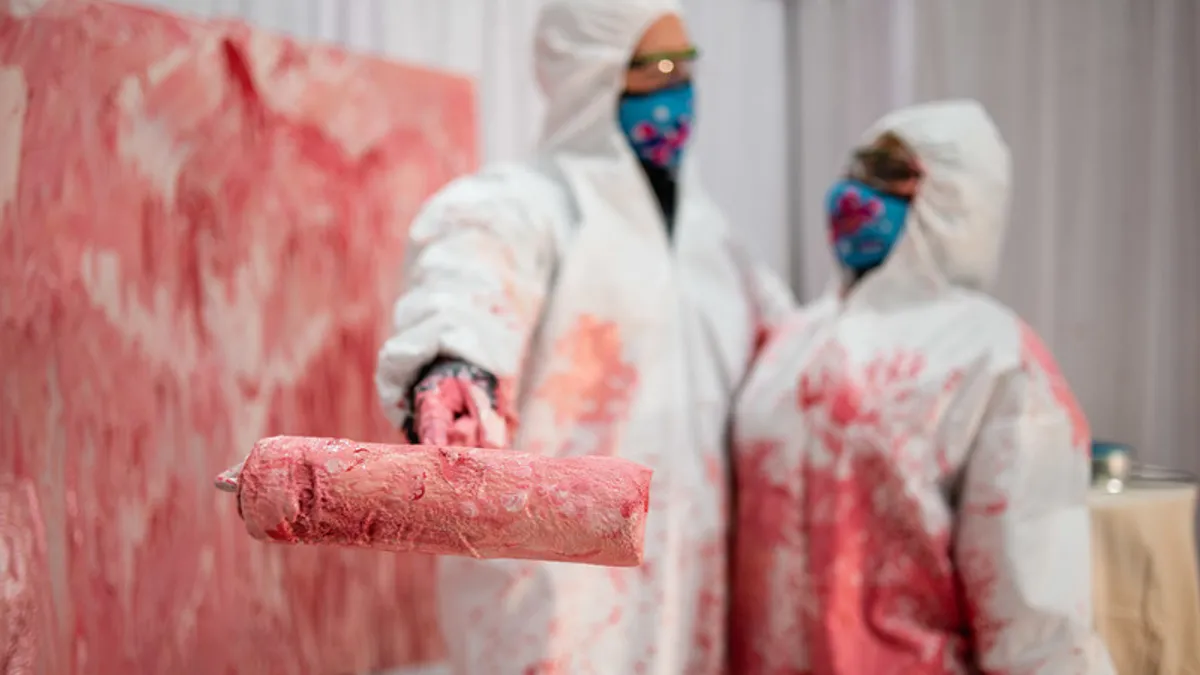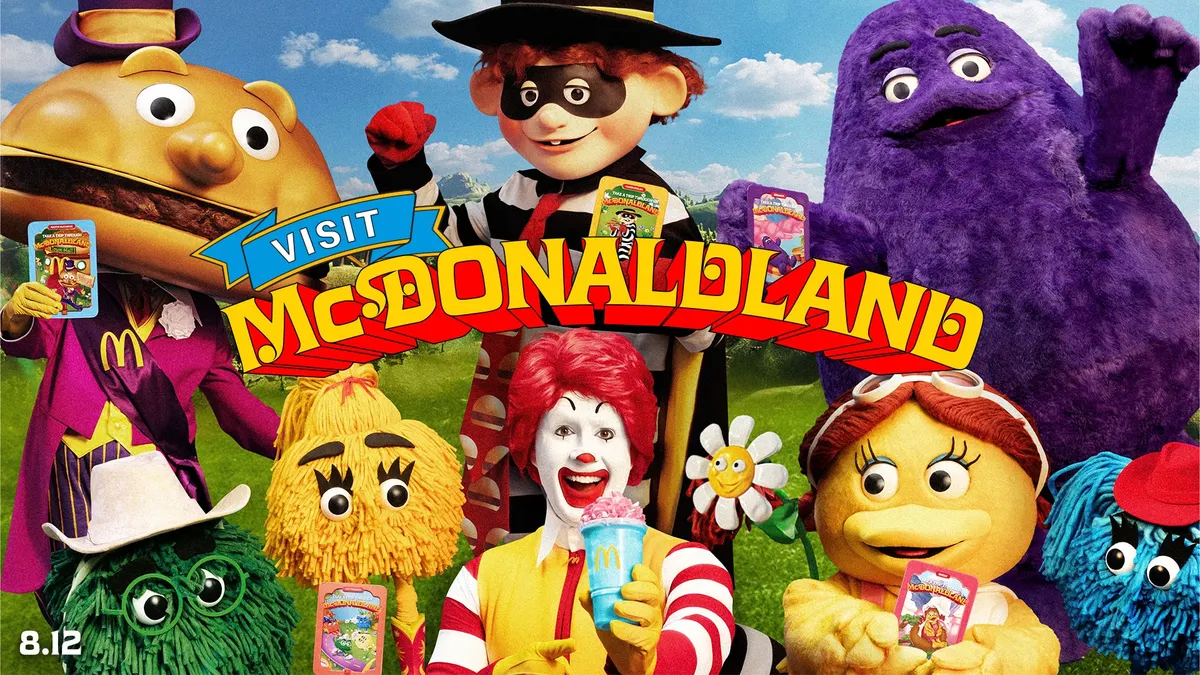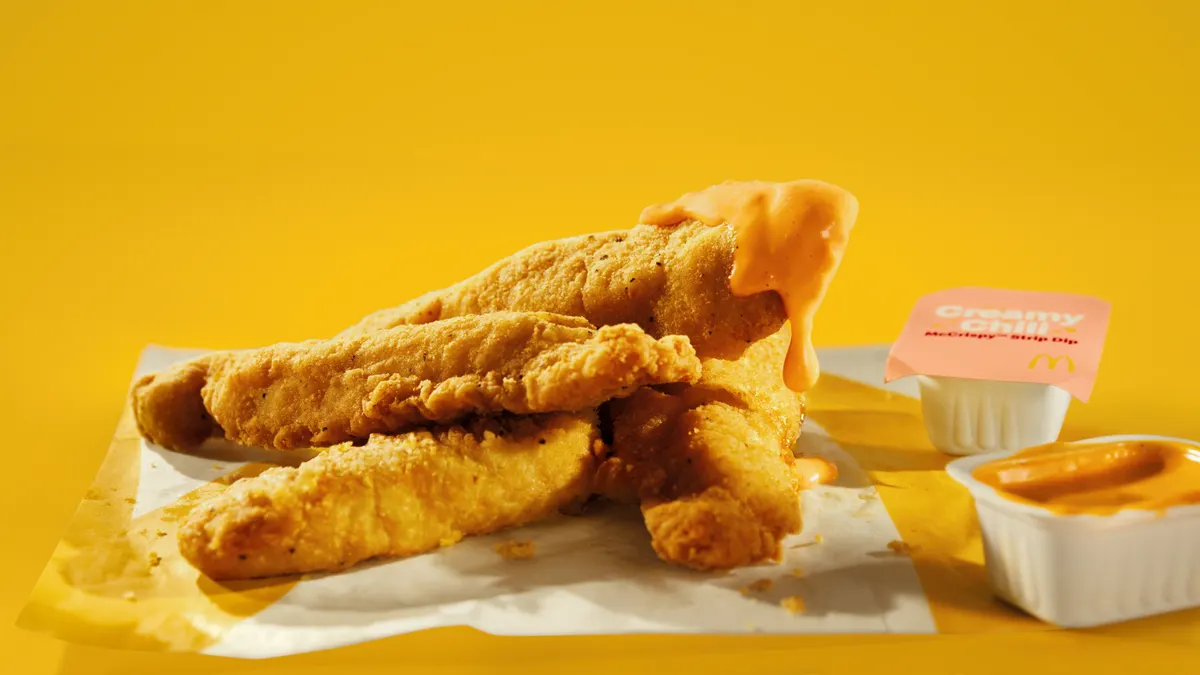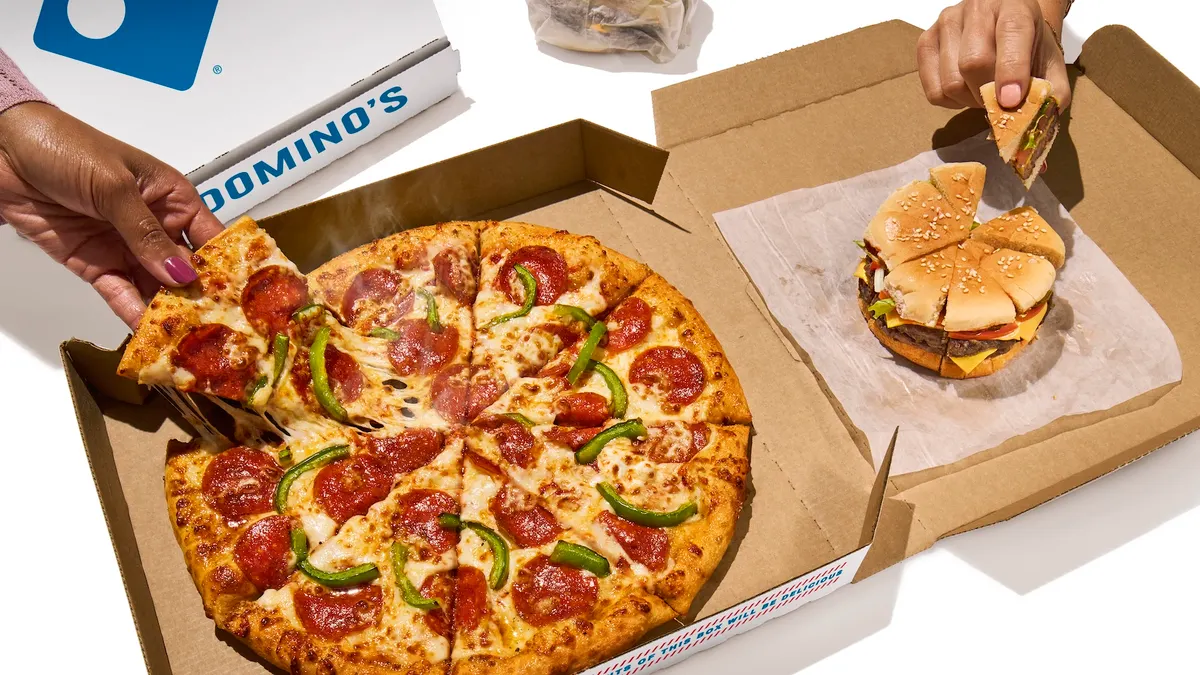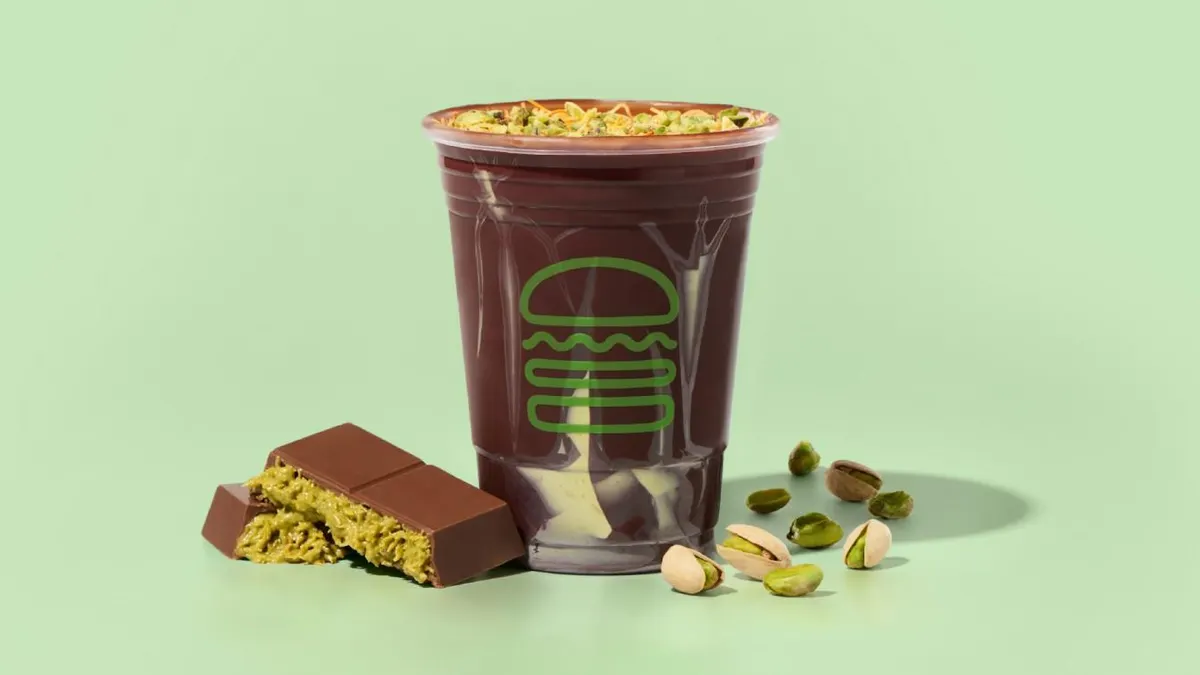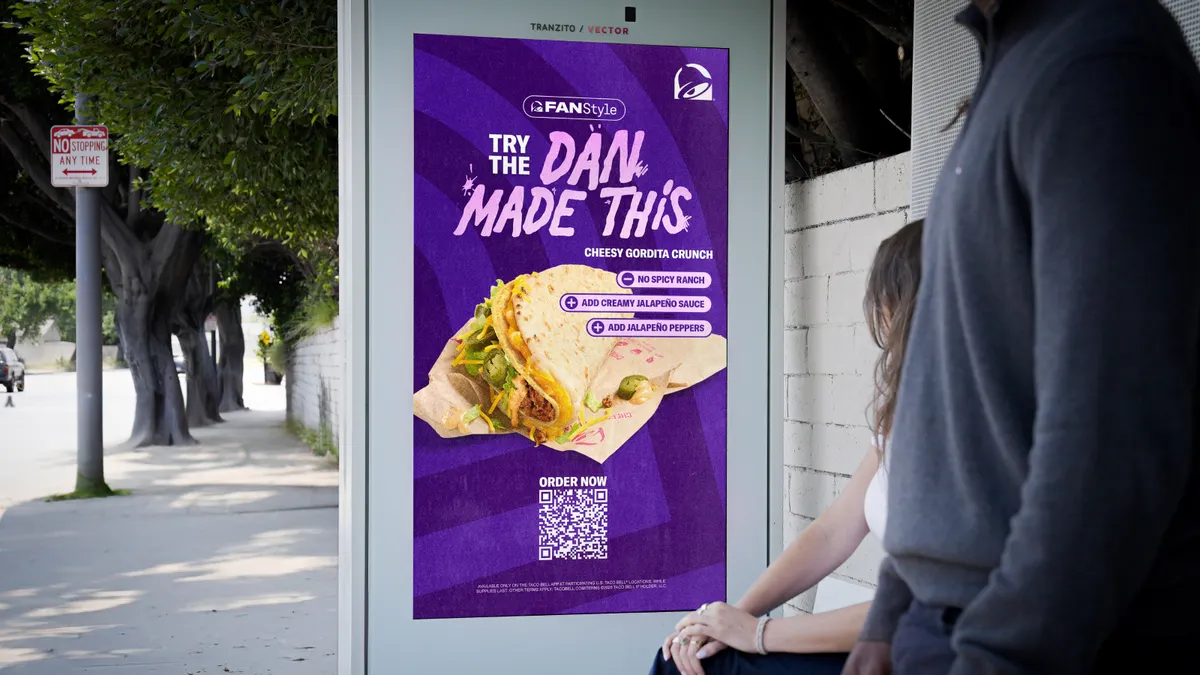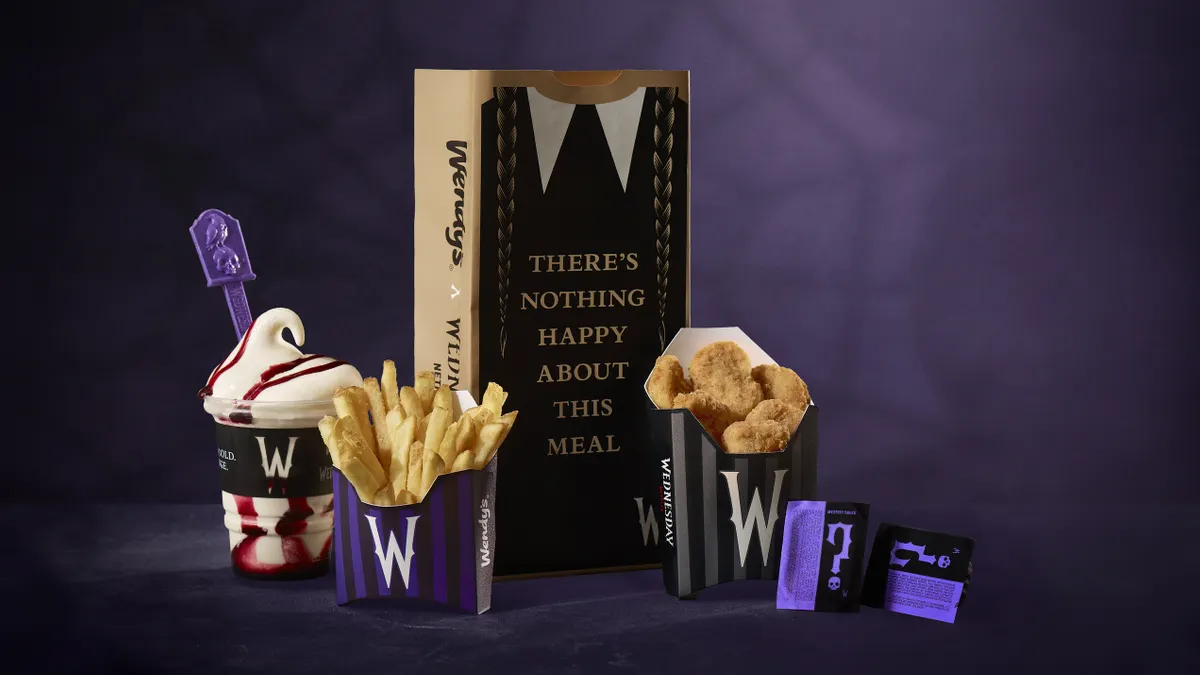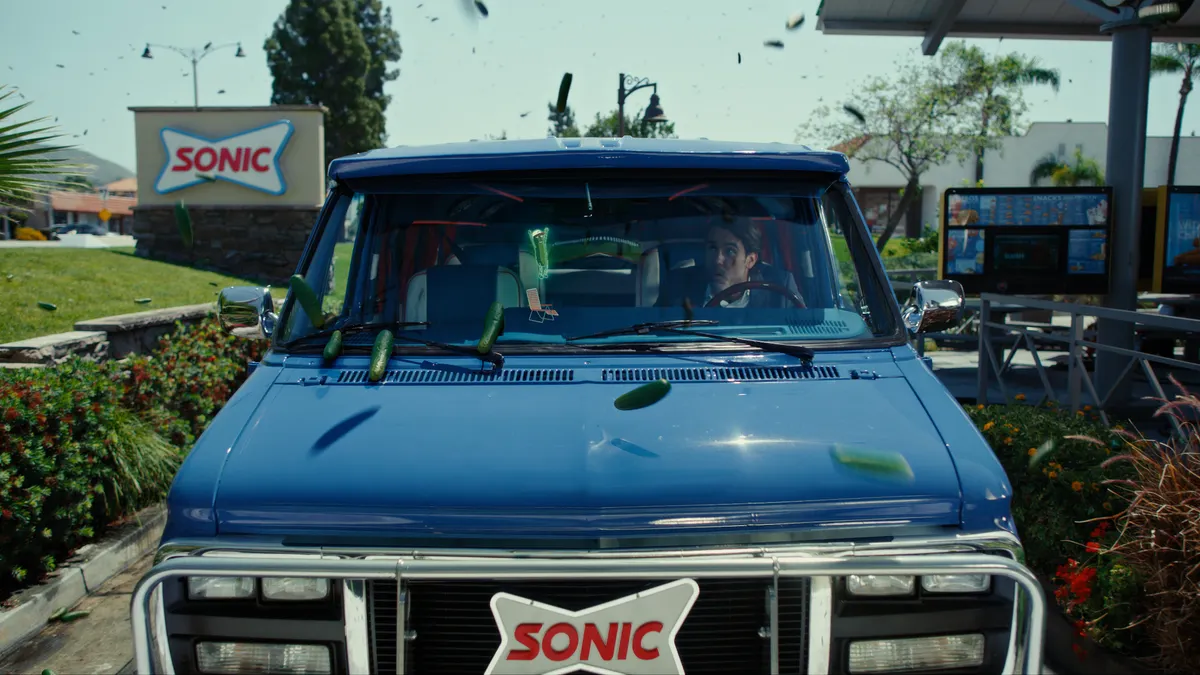As the world moves into its second year of pandemic-related restrictions, experiential marketing is attempting a comeback just in time for Valentine's Day, with marketers including Dunkin', White Castle and Lowe's offering experiences they promise will both be memorable and reflect our socially distant times. But whether or not consumers are ready to cozy up to their favorite brands again remains to be seen.
Before the pandemic hit, experiential marketing was growing as brands landed on innovative ideas like themed hotels and immersive installations to break through and grab the attention of consumers. Over the past year, not only have people largely stayed home, venturing to retail outlets and other venues only as necessary, the events where many brands looked to build buzz and connections with consumers — SXSW, Bonnaroo and ComicCon, to name a few — have been canceled or moved online. As a result, marketers have had to rethink what it means to be "experiential." At first that meant a pivot to virtual experiences, but since the beginning of 2021 there have been signs that marketers are once again thinking about in-person experiences, just with some changes.
"Initially, there were a couple of grim weeks when projects were being canceled and the big festivals were not happening. But we quickly started thinking about how to make virtual events happen," said Eric Shamlin, senior vice president of growth at agency MediaMonks. "We have been hesitant to bring back live, in-person programming right now, but we are starting to see some tiptoes into it to gauge consumers' comfort level."
"We have been hesitant to bring back live, in-person programming right now, but we are starting to see some tiptoes into it to gauge consumers' comfort level."

Eric Shamlin
Senior vice president of growth, MediaMonks
In perhaps a reflection of Valentine's Day intrinsic opportunities around small, intimate gatherings, the holiday this year arrives with experiential campaigns from several brands.
Dunkin', for example, is offering couples the chance to renew their vows at the drive-thru for several of its locations, enabling consumers to remain in their car and away from others. The experience takes the Vegas chapel takeover Dunkin' did a couple of years ago and reimagines it for a new era, where contactless engagement is top of mind.
"At Dunkin' we are always looking for safe, new ways to engage with fans, especially as customers become increasingly interested in contactless experiences," Jill Nelson, vice president of marketing and culinary at Dunkin', said.
"Early on in the pandemic, we engaged with our customers and listened to what they expected in terms of safety measures as well as continuing to follow the trends of how experiential marketing is being reimagined, specifically in this instance leveraging the drive-thru for a fun and unique way to reimagine a wedding."
In addition to Valentine's Day-themed events, another recent example of an experiential marketing campaign comes from 7-11, which is introducing a redesign of its stores by giving a handful of consumers a chance to lock themselves inside for a full-day gaming experience. Winners can bring a guest with them for the experience, but the guest must be from the winner's social pod.
Built into these experiences is an opportunity for brands to drive social engagement as participants take photos and post them online.
Personal and virtual
Concurrent with the renewed interest in in-person experiences, marketers continue to look for ways to create online and virtual experiences that can still attract attention, recognizing that many of the principles remain the same and these experiences are likely to endure.
"When you make these experiences virtual, you have to give them the same kind of craft and care and storytelling as you do in person," Shamlin said. "It's a show and a bit of entertainment. You have to distinguish it from the Zoom meetings they're all on already."
Harley Davidson's annual dealership meeting, at which new models and accessories were introduced in a virtual environment, is among the experiences created by MediaMonks. To increase engagement at a time when consumers couldn't interact as freely with the brand, the traditionally closed event was open to the public, "offering unprecedented access to the creativity and craft behind Harley Davidson's latest products," Shamin said.
But as time goes on, marketers are also recognizing that there's just no substitute for a personal interaction with a brand.
"Virtual events will not replace in-person events until we’re all wearing VR headsets and haptic gloves," said Laura Ramos, principal analyst at Forrester Research.
There are a number of ways marketers can make adjustments so their experiential activations conform with social distancing and other safety protocols. In the absence of real-world office parties, for instance, Miller Lite commissioned an outdoor art installation featuring realistic statues mimicking office party behavior.
"Virtual events will not replace in-person events until we’re all wearing VR headsets and haptic gloves."

Laura Ramos
Principal analyst, Forrester Research
Hovercraft Studio, which created Nike's recent experiential installation that uses augmented reality and QR codes to simulate a visit to Smith State Rock Park in Oregon, is focusing on creating experiences that include more personal approaches, such as using people's smartphones and other personal devices to access experiences. Another consideration is content that can be accessed quickly in-store but can be explored more deeply at home.
"We don’t want people to linger for too long," said Matt FaJohn, executive director at Hovercraft. "We are starting to use materials that are easily cleaned. We've cut down on using shared, interactive kiosks."
Windows might also present a new experiential opportunity.
"That used to be a place for a quick hit to make sure certain content was available," said FaJohn. "But with consumers queuing outside of stores, it's not inconceivable that one person will be standing in front of the same window for a while. We're starting to look at them as a way to extend the experience."
Myriad new pandemic-related behaviors might force marketers to rethink how to attract consumer attention in a number of ways, said David Marcotte, senior vice president of cross-industry and technology at Kantar Consulting. Consumers' visits to stores are more mission-oriented right now, and they are showing very little desire to shop or linger, he explained. Plus, everyone is wearing a mask, which can restrict one's field of vision.
"When I watch people go through stores when they're wearing a mask, they turn their whole heads to look at something," Marcotte said. "I've been encouraging clients to shift their merchandising from a horizontal model to one that's more vertical to better catch the eye of the consumer."
Hybrid model
With many projections not anticipating a return to large in-person gatherings until fall 2021, virtual, socially distant experiential marketing programs will likely be the norm for many more months. And, even when in-person events return and a state of normalcy is established, it's quite likely many of these pandemic-forced changes will remain.
Large conferences and events, for instance, will likely continue to offer some sort of in-person/virtual hybrid model, where big-name presenters and speakers can record presentations in advance and then join via virtual connections for a live question and answer session, Forrester's Ramos said. It's also likely event programmers will intersperse large in-person tentpole events with smaller, online-only events using repurposed or on-demand content, she said.
"A large percentage, like 70-80%, of event people and marketers believe future events will be hybrid," Ramos said. "They will serve both in-person and remote (audiences), and the challenge will be to provide the same experiences."
Pop-up stores and other marketing experiences may also continue to look different, said Hovercraft's FaJohn.
"Once stores get back to full capacity, these experiences won't be going anywhere," FaJohn said. "The shift will be in material choices, owned device experiences and touchless technology."
Ultimately, experiential marketing will need to reflect consumers' comfort levels and while some of the pandemic-related changes in behavior may be short lived, others are likely to be longer lasting, forcing brands to adjust.
"As customers become increasingly interested in quick, contactless shopping experiences, no-touch has truly become exceedingly important with more customers than ever," said Dunkin's Nelson. "It's all about giving the guest choices and access to the brand so they can run on Dunkin on their terms, safely."


